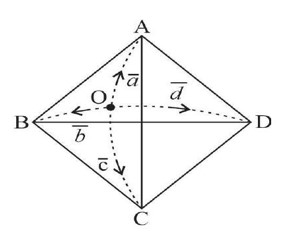Maths
Get insights from 6.5k questions on Maths, answered by students, alumni, and experts. You may also ask and answer any question you like about Maths
Follow Ask QuestionQuestions
Discussions
Active Users
Followers
New answer posted
2 months agoContributor-Level 9
Magnitude of all vectors will be same as well as angle between these vectors will also be same.

New answer posted
2 months agoContributor-Level 9
Case-I:
Case-II:
By solving (1) & (2)
Equation (4) has no solution
.(5) By equation (5) .
We obtain solving equation (2)
or
New answer posted
2 months agoContributor-Level 10
Note that Dr
< 0, hence given inequality (1) is true only if
i.e.
i.e.
only x = 8 satisfies both the inequality.
New question posted
2 months agoTaking an Exam? Selecting a College?
Get authentic answers from experts, students and alumni that you won't find anywhere else
Sign Up on ShikshaOn Shiksha, get access to
- 65k Colleges
- 1.2k Exams
- 679k Reviews
- 1800k Answers
